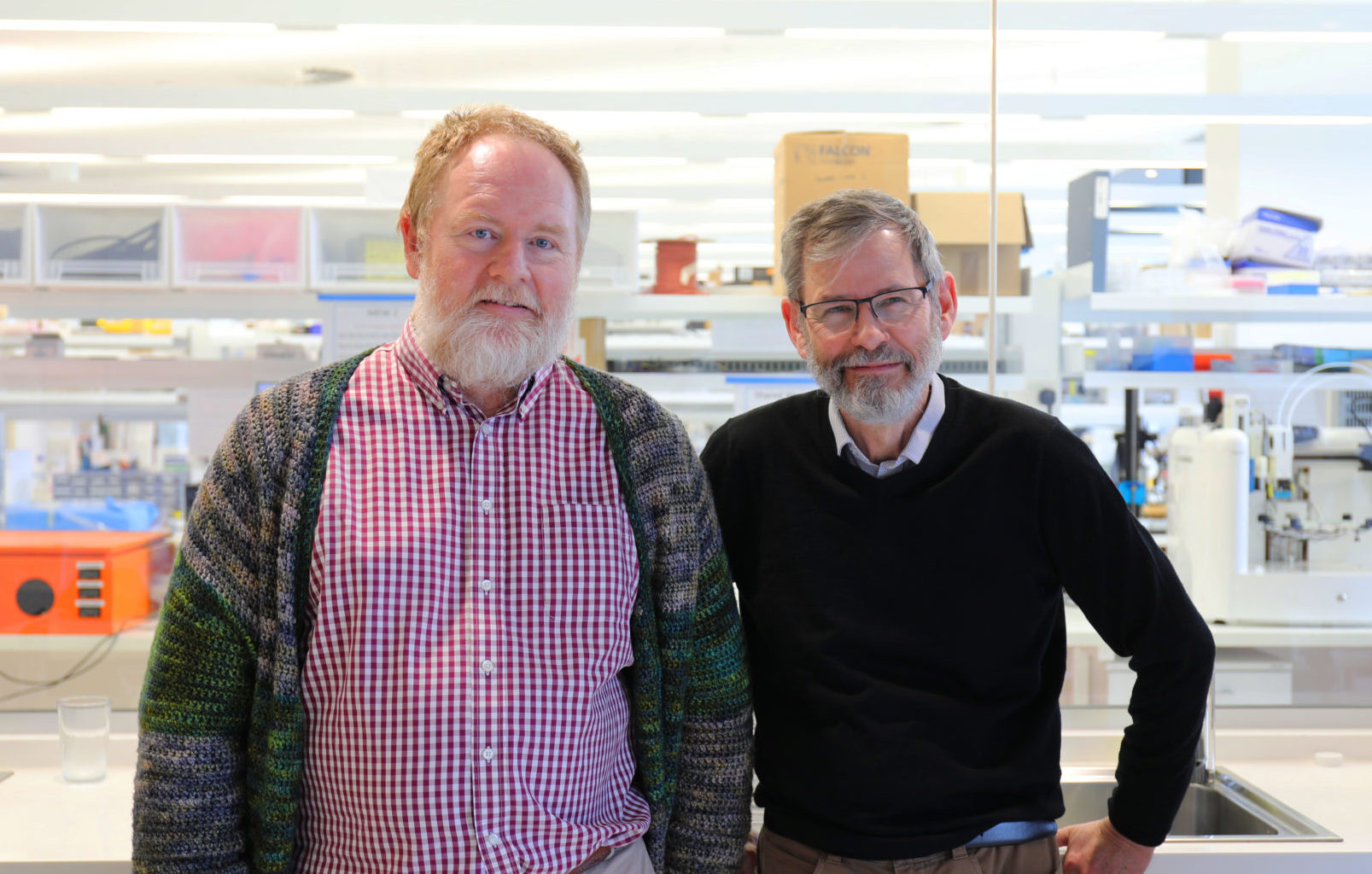
International hunt by geneticists in Perth, Australia and Yale University, U.S.A. find cause of significant facial deformity disease
Families with hemifacial microsomia, a condition where one side of the face is underdeveloped and does not grow normally, will for the first time be able to find out if they are passing on the condition, following the discovery of the genetic cause of the disease.
Twenty years ago, a hunt for the disease gene started in Perth when then PhD student Dr David Chandler (pictured above, left) started working with the biggest known family with the condition. Nine members of the same family were affected. They had been seen by Genetic Services WA, the Department of Health clinical genetics service.
Internationally renowned geneticist Professor Nigel Laing AO (pictured above, right), Head of the Genetic Disease Group at the Harry Perkins Institute of Medical Research jointly supervised the PhD and said that the technology available at the time limited the search.
“We could narrow down the hunt from three billion base pairs of DNA to 14 million.
“We were looking for a marker shared by everyone who had the disease and David Chandler found that on a region on a particular chromosome, but without the genetic sequencing technology available today, it wasn’t possible to refine the search further.
“We also needed to cross reference our findings with other families with the condition. We knew of research in Germany but it looked like that family’s condition was on a different chromosome,” he said.
Despite not being able to take the research further the proposed chromosome region of the gene was published in 2001.
Last year the Western Australian team was contacted by Professor Andrew Timberlake at Yale University saying he’d been analysing the genetic code of six other families, mostly from the USA.
“He said he had identified a possible gene for hemifacial microsomia in the region on the chromosome that matched the region identified 20 years before in our research,” said Professor Laing.
“Professor Timberlake found variants which knocked out the function of a particular gene affecting the growth patterning that influences facial development.
“He’d scoured the published literature and found our 20-year-old research and contacted us.
“We still had DNA of members of the Perth family and Genetic Services WA recontacted the family and updated the family tree.
“Collaborating with Diagnostic Genomics in Pathwest we discovered that the Perth family also had the function of the gene knocked out.
“Finally, we could say that the gene causing hemifacial microsomia had been found,” said Professor Laing.
Dr Chandler now works at AGRF – the Australian Genome Research Facility at Royal Perth Hospital.
“It is incredibly exciting to have a genetic search that commenced such a long time ago resolved for families around the world,” Dr Chandler said.
Professor Laing said the discovery identifies the cause of another genetic disease that was previously unresolved and gives couples with a history of the disease in their family reproductive choices.
The 2021 research has been published in Nature Communications: https://www.nature.com/articles/s41467-021-24852-9
+++++
Watch this video to hear more about this discovery from Harry Perkins Institute’s Professor Nigel Laing AO and AGRF’s Dr David Chandler: Genetic disease hunt resolved after 20 year search with new discovery of disease gene for facial deformity condition, hemifacial microsomia.
+++++
Media Contact: Miriam Borthwick
0437 411 683 | [email protected] | www.perkins.org.au
About the Harry Perkins Institute of Medical Research
The Harry Perkins Institute of Medical Research is one Australia’s leading medical research institutes investigating diseases affecting the community. With over 250 researchers located on three hospital campuses in Perth, the Perkins is uniquely positioned to fast track the development of new discoveries and treatments. Its wholly owned clinical trials facility, Linear Clinical Research, provides international and local pharmaceutical and biotechnology companies the facilities to trial latest drugs and treatments in healthy volunteers and patients. The Harry Perkins Institute of Medical Research is proudly West Australian, providing career opportunities to our best and brightest graduates and bringing to the State international scientists. As a registered charity, the Harry Perkins Institute relies on grants and donations to fund its medical research.
